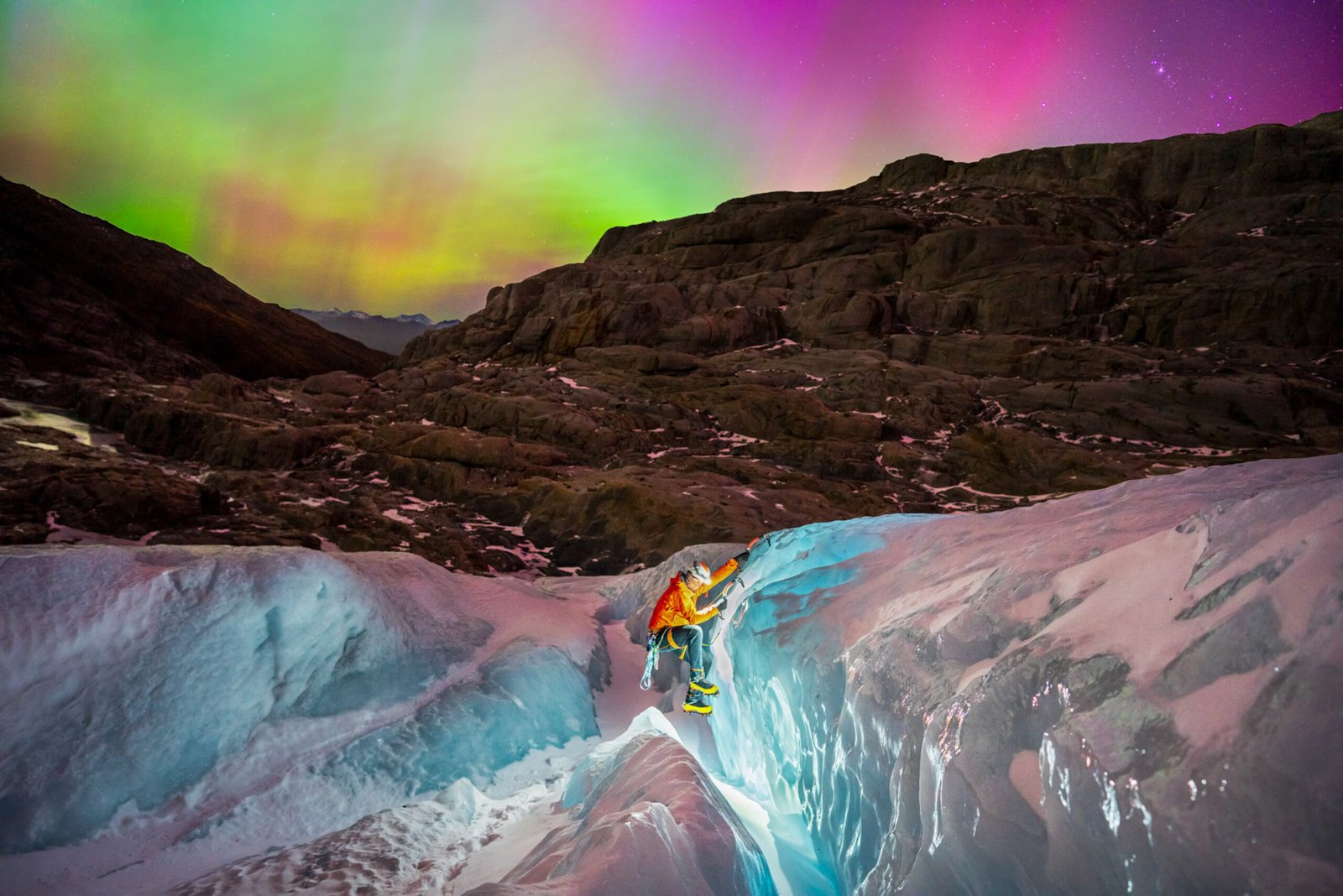In the year 2024, the skies treated us to a breathtaking spectacle. With the sun being unusually active, aurora displays around the world dazzled with their colorful beauty.
The Northern Lights Photographer of the Year, presented by Capture the Atlas, not only celebrates the photographers who captured these stunning aurora images but also their captivating stories. Photographer Adrian Cormie received a text from a friend in Nepal urging him to head as far north as possible due to an incoming geomagnetic storm, the strongest in two decades. Cormie drove to Crater Lake National Park in Oregon, where he braved the 7 feet of snow to capture a vibrant shot of the celestial light show (seen below).
May 10, 2024, began like any other new moon cycle for me. I was shooting at one of my favorite spots along the Sonoma coastline. Around 2:30 a.m., I was surprised to feel my phone buzz with a notification, as my location had sporadic cell coverage. The alert was one I never expected—and will never forget! A fellow Sony Alpha photographer, who was in Nepal at the time, messaged me: “Get as far north as you can by sunset, it’s going down tonight!” A historic geomagnetic storm, possibly peaking at G5, was predicted.
I immediately drove home to grab my Atlas pack full of cold weather gear. My gut told me to head to Crater Lake National Park in Oregon. Shortly into the drive, I learned the CLNP Rim Road was completely closed due to 7 feet of recent snowfall. Fortunately, I was prepared for deep snow conditions and pressed on.
Confident and armed with snowshoes, I settled on a spot along the South Rim, east of the Crater Lake Lodge, which was closed due to the extreme snow levels. My image, “Carpe Diem,” reflects the magnificent display of geomagnetic energy that weekend, set against the iconic and unforgettable alpine landscape.
Credit: Adrian Cormie / Northern Lights Photographer of the Year Daniel Zafra Portill
“This year, as we reach the solar maximum of the current solar cycle, the Northern and Southern Lights have been more active than ever, illuminating skies in unexpected places where they’ve rarely—if ever—been photographed,” Capture the Atlas shared. “Some examples of these unique locations include images from Arizona, California, Spain, the Chilean Patagonia, Namibia, Madeira Island, and locations as far South as Tenerife at 28º North Latitude.”

